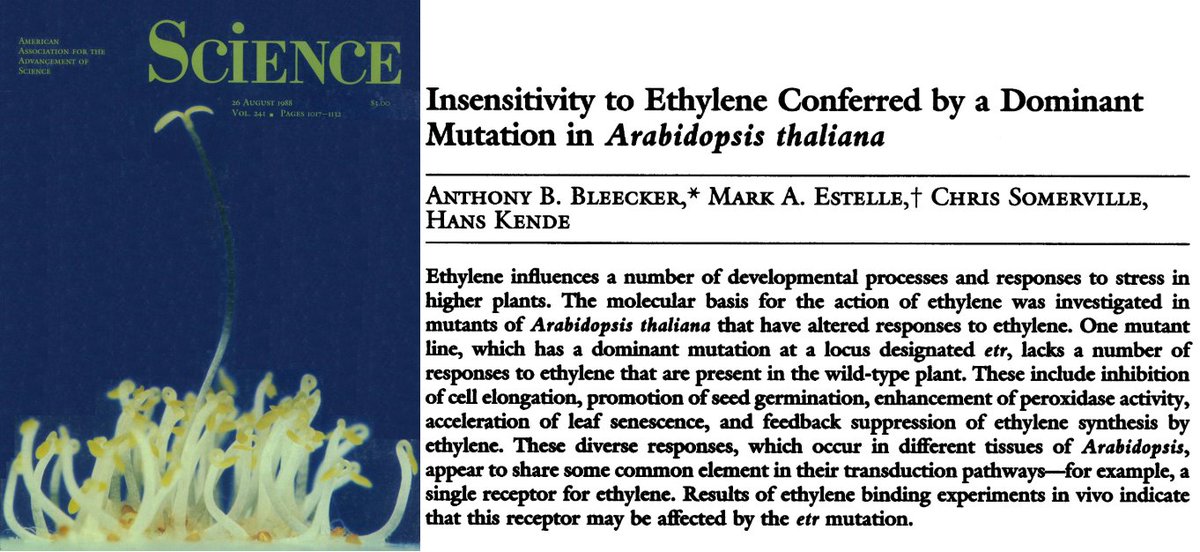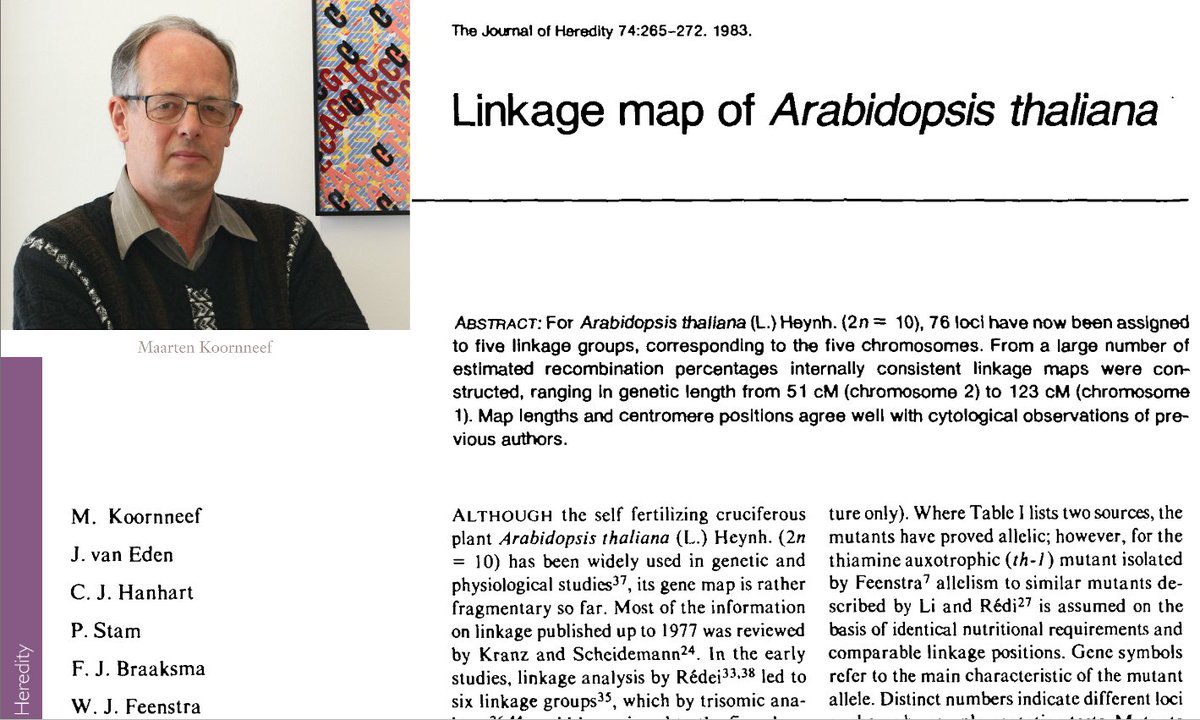#PlantScienceClassics #14: Mendelian inheritance. In 1866 Gregor Mendel published his work on dominant/recessive trait inheritance in peas, establishing the hereditary rules on which modern genetics is based. But nobody cared,& his scientific career ended. biodiversitylibrary.org/page/48299076 

Mendel had always been interested in nature, and grew/kept and observed plants and bees in his parent’s garden. He later decided to become a monk and teacher. However, he failed teacher’s exam in 1850 & 1856, & eventually settled on being a monk and substitute teacher.
He satisfied his curiosity as a naturalist by keeping and observing plants and bees in the monastery garden, and eventually became interested in how traits are determined through generations. So he started to conduct crossing experiments with mice with grey or white fur. 

However, when the abbot of his monastery found out about this, he banned Mendel from doing so, as he considered it scandalous that a monk would encourage mice to have sex. Thankfully, he didn’t realize that plants also reproduced sexually, and so Mendel moved to peas.
Mendel looked at 7 different traits, most famously pea color and shape, and always crossed two plants with different traits. He found that some traits disappeared in the first generation after crossing, but then reappeared in the following. 

He also found that the traits appeared and re-appeared with the same ratio. From this, he correctly determined that each trait was controlled by a ‘particle’ coming from each parent, and that one parent must be contributing a dominant ‘particle’ over the other (recessive). 

Mendel presented his results in 1865 to about 40 farmers and biologists at the meeting of the Natural Science Society in Brno. His talk, full of numbers and equations, rather than images, was at best understood as a study of hybridization, not heredity.
His paper was eventually published in the Proceedings of the Natural Science Society of Brno in 1865, and was completely ignored by the scientific community, despite reprints being sent out to all major societies. Between 1865-1900 it was cited just 4 times!!
Mendel tried to bring it to the attention of his peers, & even sent it with a letter to Carl Nägeli, regarded as one of the greatest botanists, & one of Mendel’s heroes. But even Nägeli didn’t grasp the results, labeling them ‘only empirical, and impossible to prove rationally’.
In the early 1870s Mendel gave up. He was now abbot of the monastery, & his administrative & teaching load was too immense to continue his research. Especially, because nobody seemed to care anyway. (Sounds eerily similar too how many modern scientific careers go…)
In 1878 Hugo de Vries became interested in heredity, after hearing Darwin speak. He started work by analyzing plants with weird phenotypes,‘monstrosities’ he called them. Analyzing hybrids, he too found that a trait seemed to be governed by single,parental hereditary ‘particles’. 

In 1899 a friend send de Vries a copy of Mendel’s work, stating that he may be interested in it, as it appeared to be a paper on hybridization (not heredity…). And in parallel, Mendel’s paper was also found by Carl E. F. J. Correns, a student of Carl Nägeli of all things. 

Correns had also performed hybridization experiments, & came to the same conclusions as de Vries. And finally, Erich von Tschermak ALSO simultaneously obtained the same results as de Vries & Correns, &, once he heard of their work, he also heard about their discovery of Mendel. 

None of the three had worked inheritance out as detailed as Mendel at that point, but realizing that he was scooped by 35 years, de Vries rushed his publication out without mentioning Mendel, but didn’t hesitate to incorporate some of Mendel’s data and neologisms into his paper! 

Thankfully, Correns, a scientist of higher integrity, picked up on this appropriation of Mendel’s terminology & writing style by de Vries, and, facing the threat of being labeled a plagiarist, de Vries gave in and added a new version of his paper, now crediting Mendel explicitly. 

Both Carl Correns & Erich von Tschermak published their papers the same year, both crediting Mendel, and Correns even clearly naming his publication ‘G. Mendel's Law Concerning the Behavior of Progeny of Varietal Hybrids’. 

Gregor Mendel died on January 6, 1884, and hence didn’t get to experience how his work finally received the recognition it deserved in 1900, and how his findings subsequently formed the foundation for the new field of modern genetics, advancing the sciences as a whole. 

Knowing all too well about #PlantBlindness in the sciences nowadays, one has to wonder what would have become of Mendel had he been allowed to continue his work on mice… And what if GoogleScholar and PubMed would have been around, of course… 😉
Further reading and sources used: S. Mukherjee: The Gene ; E. Dodson: Mendel and the Rediscovery of His Work ; E. Gasking: Why was Mendel's Work Ignored? ; J. Birchler: Mendel, mechanism, models, marketing, and more ; Ellis et al.: Mendel, 150 years on ; Wikipedia (images)
• • •
Missing some Tweet in this thread? You can try to
force a refresh



















